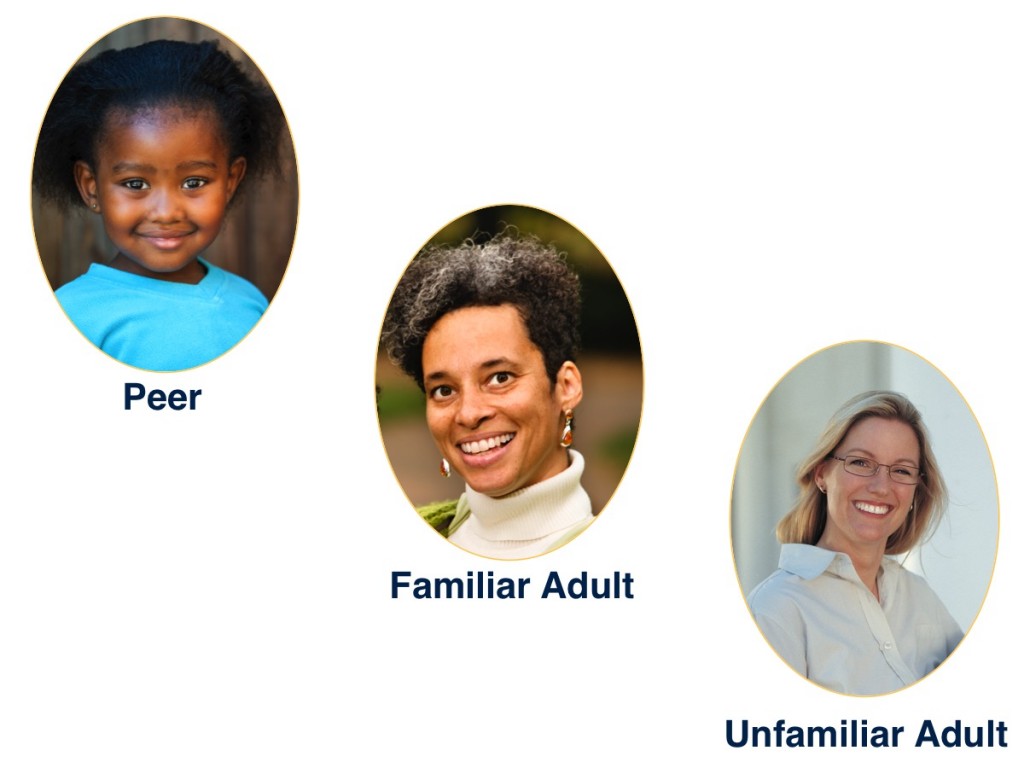
Young children encounter many people every day. A young child and his caregiver already have a long history of playing and learning together. But a stranger may not know how a particular child learns or the types of interactions he is used to experiencing. Scientists began to wonder whether infants would be more likely to imitate the actions of a familiar person than an unfamiliar person. That is, would infants only imitate their mother and not a stranger? No! Infants learn by imitating the model regardless of whether that person is familiar or unfamiliar to them. Children love to imitate other people’s actions, even if that person is a stranger to them.
The age of the model is not critical, either. Children not only imitate adults, but they imitate their peers too. Researchers have found that infants imitated a peer’s actions nearly 80% of the time. They are imitating and learning from the peers they encounter in daycare and preschool.
The fact that children learn from social partners of all different ages and levels of familiarity is a good thing. It demonstrates just how powerful imitation is during early childhood. By imitating social partners of all ages, children have even more opportunities to learn about the world and to see how others are “like me.”
-
- Control group
- a group in a study who does not receive the treatment. The group serves as a comparison for the experimental group.
- Deferred imitation
- reproducing a behavior after a delay from its initial demonstration
- Electroencephalography (EEG)
- a method used to measure electrical activity in the brain
- Generalization
- the ability to apply something learned in one situation to a new situation
- Imitation
- observing then reproducing, or copying, a behavior
- Mirror neurons
- a type of brain cell. Mirror neurons respond when an animal produces an action and when they observe another animal produce the same action.
- Theory of mind
- the awareness that other people can have different thoughts and feelings from one’s own
- Trial-and-error learning
- trying different actions until you perform the right one